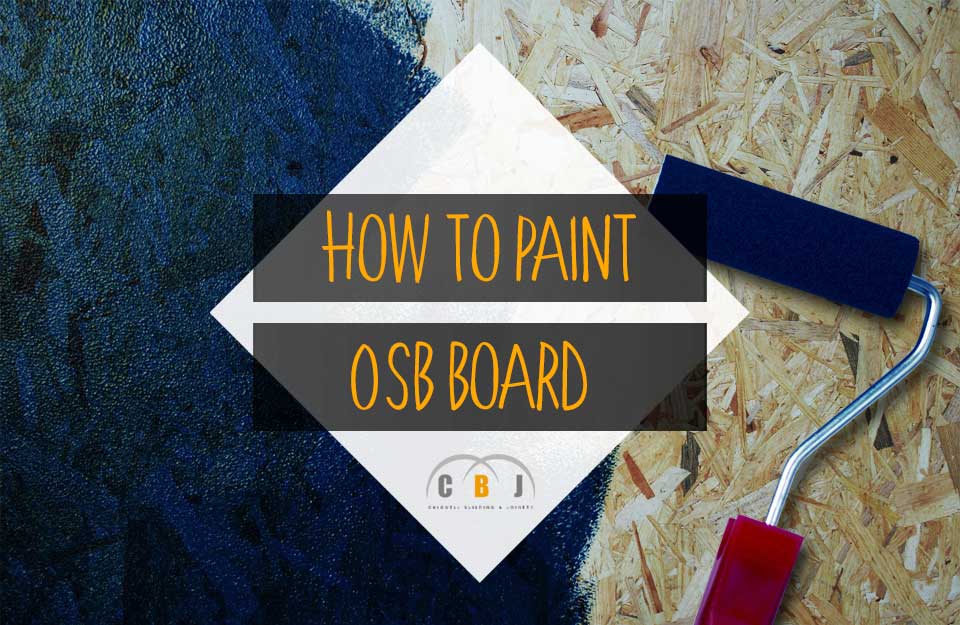
How to Paint OSB Board
Author Chigwell Building & Joinery
Date 01/12/22
OSB, or Oriented Strand Board is a popular material used in hardwood flooring, underlayment, wall sheathing, sheds, and roofs.
It is an engineered wood product, which is generally more affordable than plywood, and it has no internal gaps.
Indeed, OSB is considered as a functional option for many building and remodelling projects as it is low cost, and yet considerably strong.
Table of Contents
- What is OSB Board?
- Tools You’ll Need
- Surface Preparation
- Fill Gaps
- Seal Edges
- Priming the Surface
- Using the Right Paint
- Paint Roller vs Spray Painting
- Conclusion
What is OSB Board?
Image credit: Wickes
OSB board is composed of several layers of chipped wood.
These are referred to as strands.
Once they are arranged to be flat and oriented in a perpendicular form to each other, cross-hatched strands with resins are added to create a more stable and solid board.
Many prefer OSB to plywood and other types of wood because it is environmentally friendly, affordable and easy to purchase.
It is also easier to screw into.
While OSB board is mainly used for its functionality, in some cases it is also used as a finished surface.
As a result in such cases, one may wish to paint it to make it look more attractive.
Having said that, there are some things to bear in mind when painting OSB board.
We shall discuss these factors as well as the best way to go about painting such boards in more detail hereunder.
Tools You’ll Need
Image credit: DIY.com
You will need the following tools and materials to paint OSB:
- Paint
- Primer
- Polyester resin filler (optional)
- Wood floor wax stripper (optional)
- 80 grit sandpaper
- Roller tray and thick nap roller cover (19 inch)
- Bucket and screen or a paint tray
- Electric sander
- Dust mask
- Gloves
- Vacuum cleaner
Surface Preparation
Start off by lightly sanding the surface of the OSB using an 80 grit sandpaper on an electric sander.
Make sure not to sand the edges.
Once ready, clean the surface thoroughly.
To do this well, it’s best to use a vacuum cleaner with a brush attachment, since cotton rags or tack cloths will not do the job well enough due to the rough texture of OSB.
Proper surface preparation is of utmost importance.
This is especially due to the fact that OSB board has a thin layer of wax.
This coating is intended to protect it against moisture, but it also inhibits painting.
As a result, it’s best to remove this coating by applying a wood floor wax stripper, prior to painting the OSB.
The board’s texture can also be smoothed out somewhat if you add a polyester resin filler.
Alternate the filler coats with some sanding to smooth out the texture of the cross hatched wood chips of the board.
Fill Gaps
Any gaps in the OSB should be filled up by using a block-filler primer.
This will fill up the gaps in between the wood strands well.
It is also important to fill gaps in OSB as a smoother look can be achieved, and this will help in getting a better paint job.
Seal Edges
Image credit: Amazon
You should try to preserve the factory edges as much as possible.
These will be smoother than those which you need to cut.
And since OSB’s cut edges are prone to water penetration, it’s crucial to seal them.
While factory edges will have already been treated with a sealant, this is not intended to last for a long period of time.
So the edges should be sealed well.
To do this, first apply a resin filler, and then sand.
As a result, the edges will be far more moisture resistant.
Another noteworthy consideration is it’s crucial to avoid exposing the edges of OSB board to water or moisture as swelling and/or cracking could occur.
Despite the fact that OSB is manufactured to withstand moisture exposure to a certain extent, such as occasional rain, it’s highly recommended to avoid permanent exposure of such boards from the elements.
This is because if water is allowed to penetrate the material, swelling and disintegration will result.
Priming the Surface
Primer is crucial to eliminate the possibility of the OSB’s wood fibres to lift and separate due to moisture exposure.
It’s best to use an acrylic latex stain-blocking primer, as this will offer a good coverage and protection, as well as hide any stains on the OSB.
Priming also serves to seal the paint and reduces the possibility of any bleed-through.
Pour primer in a tray, dab the roller in it, and prime the boards making w-shaped sweeps.
After around two hours, apply a second coating of primer.
This process should be repeated until you can see that the OSB’s flaky patterns have been hidden.
Make sure to allow it to dry well before moving on to painting.
Using the Right Paint
It’s very important to use the right paint for OSB.
Ideally, avoid water-based paints since as mentioned earlier, OSB can swell.
Thus, an oil-based primer is recommended.
If you were to paint OSB as if it were plywood or a similar material, the painted surface will end up peeling after a period of time.
It will also look unattractive and regular maintenance will definitely be a must.
Thus it’s essential to opt for oil-based paint.
First, apply a top coat of the paint and allow it to dry well.
Then, repeat the process as it’s always best to apply two coats.
Paint Roller vs Spray Painting
Image credit: Pexels
You might be tempted to spray paint OSB instead of using a paint roller.
However this is not ideal.
Rolling paint will take longer than spraying, but you will achieve much better coverage.
Moreover, you should be aware that if certain paints are used, the OSB’s strands will still remain visible if merely one coat of paint is applied.
Besides, the open strands will absorb paint readily, and hence several coats would be necessary.
As a result, it’s recommended that a filler and heavy primer are applied in order to remove some of the wood’s texture from the board, prior to painting.
Conclusion
OSB is a great alternative to plywood and other materials.
Besides being affordable and environmentally friendly, it’s also readily available at most DIY stores and timber merchants.
However, if you’re going to paint it, it’s important to follow this guide to achieve good results.
OSB can be painted, but this needs to be done properly and carefully, so that in the end you can have a nicely painted OSB project that can last a long time.


